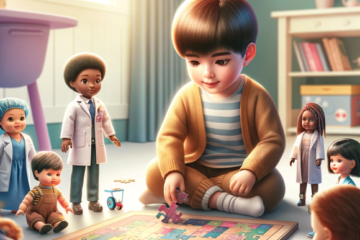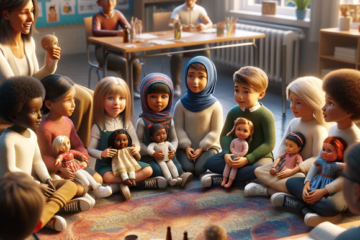Introduction:
Dolls have long been a staple of childhood, serving as companions, confidants, and tools for imaginative play. However, beyond their role in entertainment, dolls play a significant role in shaping children’s perceptions of gender and identity. This article explores the nuanced influence of dolls on the formation of gender identity in children, highlighting the importance of fostering inclusivity and understanding in their development.
Understanding Gender Identity:
Before delving into the influence of dolls, it’s crucial to understand the concept of gender identity. Gender identity refers to an individual’s internal sense of their own gender, which may or may not align with the sex assigned to them at birth. This sense of self is shaped by a myriad of factors, including societal norms, cultural influences, and personal experiences.
The Role of Dolls:
Dolls serve as powerful tools for children to explore and express their understanding of gender. From a young age, children are exposed to dolls that are often marketed and categorized according to traditional gender roles. For example, girls are frequently given dolls that emphasize nurturing and domesticity, while boys are encouraged to play with action figures that promote strength and heroism.
Impact on Gender Stereotypes:
While dolls can provide children with opportunities for imaginative play and emotional expression, they can also reinforce gender stereotypes. When children are consistently exposed to dolls that embody stereotypical gender roles, they may internalize these ideals and limit their perception of gender to narrow constructs. This can perpetuate harmful stereotypes and restrict the development of a more fluid and inclusive understanding of gender.
Promoting Diversity and Inclusivity:
To mitigate the potential negative effects of dolls on gender identity formation, it’s essential to provide children with a diverse range of toys that reflect the complexity of gender expression. This includes offering dolls that challenge traditional gender norms, such as gender-neutral dolls or dolls with diverse body types and ethnicities. By exposing children to a variety of representations, we can encourage them to embrace their own unique identities and cultivate empathy and acceptance towards others.
Parental Guidance and Support:
Parents and caregivers play a critical role in shaping children’s attitudes towards gender and identity. By actively engaging with children during playtime and encouraging open dialogue about gender, parents can help their children navigate and understand the diverse spectrum of gender expression. Additionally, parents can seek out educational resources and books that promote gender diversity and inclusivity, further reinforcing positive attitudes towards identity exploration.
Conclusion:
Dolls hold significant sway in shaping children’s perceptions of gender and identity. While they can reinforce traditional stereotypes, they also present an opportunity to promote diversity and understanding. By providing children with a range of inclusive toys and fostering open communication about gender, we can empower them to embrace their authentic selves and respect the identities of others. Let’s nurture a future where every child feels seen, accepted, and free to express their true selves, one doll at a time.



0 Comments